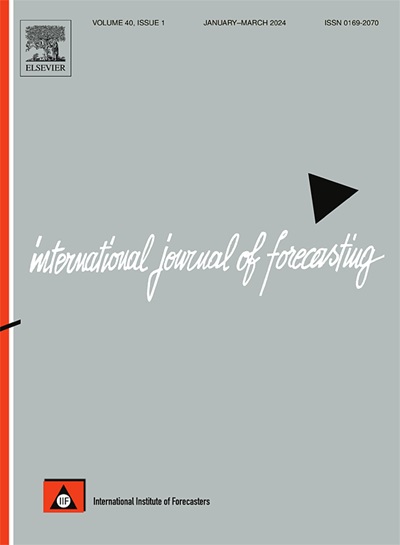Multivariate dynamic mixed-frequency density pooling for financial forecasting
IF 7.1
2区 经济学
Q1 ECONOMICS
引用次数: 0
Abstract
This article investigates the benefits of combining information available from daily and intraday data in financial return forecasting. The two data sources are combined via a density pooling approach, wherein the individual densities are represented as a copula function, and the potentially time-varying pooling weights depend on the forecasting performance of each model. The dependence structure in the daily frequency case is extracted from a standard static and dynamic conditional covariance modeling, and the high-frequency counterpart is based on a realized covariance measure. We find that incorporating both high- and low-frequency information via density pooling provides significant gains in predictive model performance over any individual model and any model combination within the same data frequency. A portfolio allocation exercise quantifies the economic gains by producing investment portfolios with the smallest variance and highest Sharpe ratio.
金融预测的多变量动态混频密度池
本文研究了在财务回报预测中结合每日和当日数据信息的好处。这两个数据源通过密度池化方法组合在一起,其中单个密度被表示为一个联结函数,并且潜在的时变池化权重取决于每个模型的预测性能。从标准的静态和动态条件协方差模型中提取日频率情况下的依赖结构,并基于已实现的协方差度量提取高频情况下的依赖结构。我们发现,通过密度池结合高频和低频信息,在预测模型性能方面比任何单个模型和相同数据频率的任何模型组合都有显著的提高。投资组合分配通过产生具有最小方差和最高夏普比率的投资组合来量化经济收益。
本文章由计算机程序翻译,如有差异,请以英文原文为准。
求助全文
约1分钟内获得全文
求助全文
来源期刊

International Journal of Forecasting
Multiple-
CiteScore
17.10
自引率
11.40%
发文量
189
审稿时长
77 days
期刊介绍:
The International Journal of Forecasting is a leading journal in its field that publishes high quality refereed papers. It aims to bridge the gap between theory and practice, making forecasting useful and relevant for decision and policy makers. The journal places strong emphasis on empirical studies, evaluation activities, implementation research, and improving the practice of forecasting. It welcomes various points of view and encourages debate to find solutions to field-related problems. The journal is the official publication of the International Institute of Forecasters (IIF) and is indexed in Sociological Abstracts, Journal of Economic Literature, Statistical Theory and Method Abstracts, INSPEC, Current Contents, UMI Data Courier, RePEc, Academic Journal Guide, CIS, IAOR, and Social Sciences Citation Index.
 求助内容:
求助内容: 应助结果提醒方式:
应助结果提醒方式:


